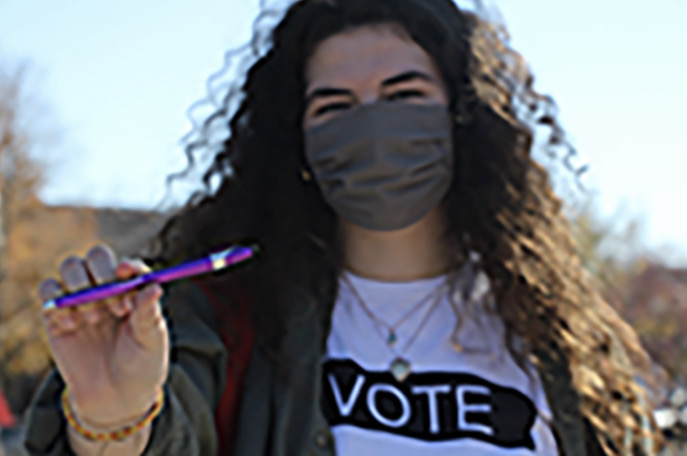With 2020 being as strange of a year as it has been, it’s seemingly all culminating with one of the most unique elections in U.S. history.
In 2016, 58% of eligible voters participated in the election, according to fairvote.org, but over 22 million americans voted early. In 2020, almost 85 million people have voted early according to a study done by the BBC, and 65% of eligible voters are projected to vote in this election, the most since 1908, according to the same study.
One early voter is social studies teacher Victoria Zonko, who said, “having more early voting opportunities gives more citizens the option to participate in politics. I think that in the future, we will continue to increase early voting given the projected voter turnout this year. No matter what party you side with, both can agree that more voter participation is beneficial to society as a whole.”
Higher voter projection, however, could lead to issues due to the nature of the COVID-19 epidemic, leading to struggles relating to the logistics of the election. One solution to this issue is the use of mail-in or absentee ballots. In all but five states, absentee ballots can be acquired on the basis of the COVID-19 pandemic, according to the Washington Post. “It’s been very politicised but I don’t think that it should be. It’s been around for ages and it’s a valuable part of our democracy,” senior Anjelica Dry said about the use of absentee ballots.
Dry is an eligible voter in this election, as well as a poll worker in Raytown. “I decided to become a poll worker partially because my mom was a poll worker and really enjoyed it … and partially because we are in a pandemic and poll workers are usually older … I thought it was my civic duty,” Dry said.
One controversy stemming from mail-in voting is a decrease in funding for the US Postal Service over the Trump Administration. According to a study done by the Government Accountability office, the postal service lost 3.8 billion dollars in 2018 alone. This, with the added stress of carrying the responsibility of delivering absentee ballots, has led to struggles within the service and a lack of confidence from prominent politicians, including President Trump. In response, Postmaster General Louis DeJoy said in Aug., “Although there will likely be an unprecedented increase in election mail volume due to the pandemic, the Postal Service has ample capacity to deliver all election mail securely and on-time in accordance with our delivery standards, and we will do so.”
In addition to lack of funding, states like Minnesota are just beginning to decide when absentee ballots are due. Minn. decided the week prior to the election that ballots are to be turned in by the time polls close on election day, according to CBS news.
All of this coupled with what Zonko called the “extremely partisan” nature of this election, has led to increased engagement with younger voters, specifically social media savvy Gen-Zers.
“I have been impressed with the participation of young people, particularly Gen Z, this time around. I am constantly seeing young people rallying their followers on social media platforms like TikTok and Instagram to vote, informing them on issues etc,” Zonko said.“ However, I do think with this rise of information and technology it is important that voters are understanding how to sift through information critically and fact check all claims from people who are running.”
Dry said she thinks that younger people are seeing what they think is wrong and advocating for their views, even if some cannot vote yet. “TikTok is doing a lot for this election because of the algorithm. You’re seeing people from all over the country and the world, and they’re seeing other people’s point of view from both sides,” Dry said.
On Nov. 3rd, the american people made their decision, although it may take time to know for sure who our president will be in January. Dry said, “the 2020 election is a learning experience. It’s going to lead to a lot of changes no matter who wins.”















